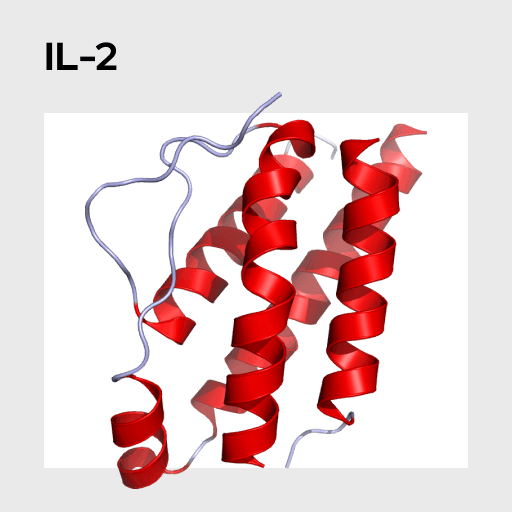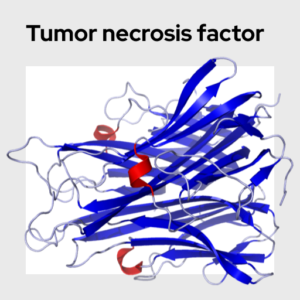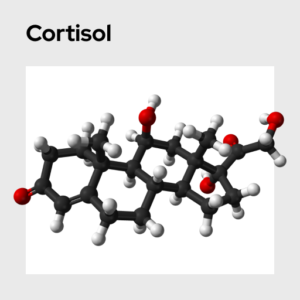Interleukin 2 (IL-2)
Interleukin 2 (IL-2) is also known as T-cell growth factor. IL-2 is a pleiotropic cytokine produced and released by activated T cells that plays a key role in regulating T-cell proliferation. This cytokine is also involved in the prevention of autoimmune conditions by promoting immature T cells to differentiate into T regulatory cells. IL-2 is used as a pharmaceutical drug in the treatment of certain cancers. Because levels of this cytokine are typically low in the blood of healthy people, an ultra-sensitive assay may be required to measure this cytokine in serum or plasma. This analyte is eligible for multiplexing.
Name: Interleukin 2 (IL-2)
Category: Health & Inflammation
Type of test: Blood + Saliva
Interleukin-2 (IL-2), also known as T-cell growth factor, is a pleiotropic cytokine that, among other functions, regulates T-cell proliferation and differentiation. IL-2 is primarily produced by activate T helper and cytotoxic T cells; IL-2 receptors are express by lymphocytes. IL-2 signals are transduced through a variety of signaling pathways, such as JAK-STAT and MAPK/ERK pathways, which activate transcription factors, like NFkB.
IL-2 plays important roles in both immune defenses against infection, as well as protection against autoimmunity. These effects are mediated primarily through the effects of IL-2 on T cells. For example, in the thymus, IL-2 promotes differentiation of immature T cells into regulatory T cells. Regulatory T cells prevent autoimmunity by dampening excessive immune responses and promoting tolerance of self-antigens. Further, IL-2 promotes the production of memory T cells and is thus involved in facilitating adaptive immunity. In addition to T cells, IL-2 enhances NK cell responses and has been shown to activate NK cells in vitro. IL-2 also has clinical applications, such as in the treatment of certain cancers, including renal cell carcinoma and metastatic melanoma.
IL-2 also influences the central nervous system. For example, IL-2 receptors interact with the cholinergic system. Through this pathway and others, IL-2 has been shown to attenuate neuroinflammation in murine models of traumatic brain injury. IL-2 can be measured in both saliva and blood. The extent to which serum / plasma and salivary levels of this cytokine correlate is yet to be determined.
Araujo, D. M., Lapchak, P. A., & Collier, B. (1989). Localization of interleukin-2 immunoreactivity and interleukin-2 receptors in the rat brain: interaction with the cholinergic system. Brain Research, 498, 257-266. https://pubmed.ncbi.nlm.nih.gov/2790482/
Gao, W., Li, F., Zhou, Z., Xu, X., Wu, Y., Zhou, S., ... & Zhang, J. (2017). IL-2/Anti-IL-2 complex attenuates inflammation and BBB disruption in mice subjected to traumatic brain injury. Frontiers in Neurology, 8, e281. https://www.frontiersin.org/articles/10.3389/fneur.2017.00281/full
Sim, G. C., & Radvanyi, L. (2014). The IL-2 cytokine family in cancer immunotherapy. Cytokine and Growth Factor Reviews, 25, 377-390. https://pubmed.ncbi.nlm.nih.gov/25200249/
Taniguchi, T., & Minami, Y. (1993). The IL-2IL-2 receptor system: a current overview. Cell, 73(1), 5-8. https://pubmed.ncbi.nlm.nih.gov/8462103/






